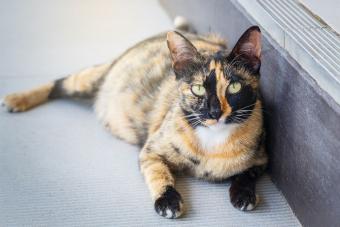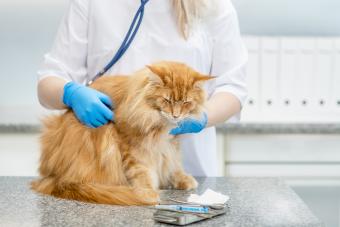
Just as humans should drink water to stay hydrated, it's also important for cats. Hydration is necessary for proper organ function, body temperature regulation, intestinal motility, and tissue repair, among other required functions. Whether your veterinarian has advised you to increase your pet's water intake due to conditions such as renal disease, or you're simply concerned about your cat's hydration, there are a number of ways that you can encourage them to take in more fluids.
Ideas for Keeping Cats Hydrated
Did you know that in nature, cats are not typically big water drinkers? Cats in the wild get 70 percent of their water from the prey they eat. However, many domesticated cats today are given only dry cat food, which doesn't contain much moisture.
While some cats are allowed outside so they can hunt and get water this way, many are indoor cats and are never allowed outside. If you have an indoor cat, you should make sure they always have access to fresh water. It can also be beneficial to feed your cat wet food at least once daily, as this will help supplement water that they may not get from drinking straight from the bowl. In addition to these recommendations, the following are a few tips to help keep your cat hydrated.
Try Running Water
In the wild, standing water can contain unsafe bacteria or parasites, so a cat's instinct is to avoid it. Even though the water in their bowl is clean and safe, a cat may naturally feel compelled to stay away from it.
To simulate the flowing steams they may drink from in the wild, try to offer your kitty running water. You could use a fountain water system specifically designed for pets or try allowing some water to drip out of your sink tap.

Consider Water Temperature
Some cats may be sensitive to the temperature of the fluid in their bowl. Experiment with different temperatures. Try to offer them water that is at room temperature, followed by water that is chilled with a few ice cubes to find their preference.
Separate Water and Food Bowls
If your cat doesn't seem interested in their water, the location of the bowl or fountain may be the reason. Try to keep the water in the same place consistently so they always know where to go, but avoid placing it next to the food bowl.
It might sound odd, but many cats do not like to drink in the same place where their food is. This is another biological instinct that they developed in the wild. Be sure to place their water at least a few feet away from the food bowl. This will also help prevent bits of food from getting in the water, which can turn them off.
Use Stainless Steel or Ceramic Dishes
Unfortunately, the bowl material could give your cat's water an offensive taste, or even contain leached toxins that can harm them. Be sure to avoid plastic dishes and instead use stainless steel, glass, or ceramic bowls. Plastic dishes have also been known to give cats chin acne.

Clean Bowls Daily
Be sure to clean the water bowl daily, since a cat's sense of smell is so acute they may be put off by the slightest odd odor in the water dish. Many cats also hate bits of food, debris, or hair floating in their water. Any of these could lead to them not wanting to drink water.
Add Extra Water to Canned Food
As mentioned, canned or moisture-rich homemade food is optimal for cats because of its high water content. If your cat will eat wet food at least once each day, try adding additional water to it. This will create a nice "gravy" that most cats love and will be eager to lick up.
Hydration Treat for Cats
If you're still concerned about your cat's water intake, a warm fish and veggie stew is a great treat that can help keep your cat hydrated.
Warm Fish And Vegetable Soup
This is a wonderful treat to help the kitty that is protesting drinking water. It can also serve as a warm, cozy treat during the winter.
Ingredients
- 2 Cups Fish stock -- Use low salt chicken or beef broth if you cannot find fish stock. You can also use bottled clam juice mixed with water; use 2 bottles of clam juice with 2 cups of water.
- 2 Tablespoons baby carrots, chopped
- 2 Tablespoons chopped catnip (optional)
- 2 Tablespoons drained, chopped sardines, or any chopped fish you know your kitty loves
- 4 Tablespoons dried fish flakes to sprinkle on top
Directions
- In a large stock pot, add all your ingredients except for the fish flakes, then bring to a boil.
- Once it boils, turn down to a simmer for 30 minutes or until the carrots are very tender and the fish is cooked through.
- Cool and serve. You can even add this as gravy to your cat's dry or wet food.
If you choose to add this to your cat's dry food, do not allow it to sit out. The food can become soggy, which your cat probably won't like, or it could spoil. If they don't eat it right away or after a short time, remove the food.
Monitor Cat Hydration Closely
An understanding of a cat's wild instincts can help explain why they may not want to drink water in the ways we expect. To keep your cat as healthy as possible, be sure to monitor their water intake and note any changes. Although proper hydration is important for all pets, excessive thirst or not drinking water at all could be signs of a medical condition. If you are concerned about your cat's water intake, be sure to consult with your veterinarian.







